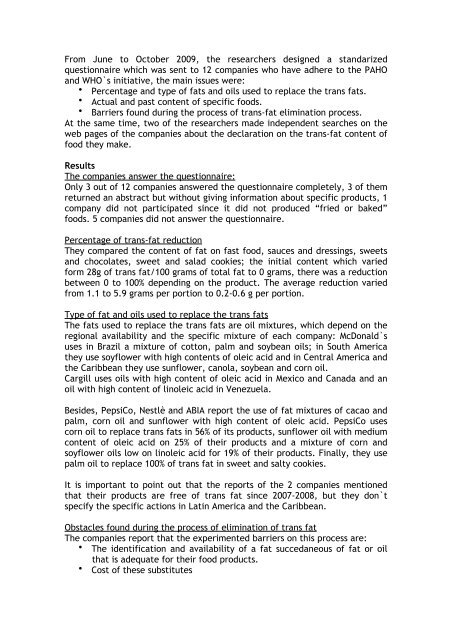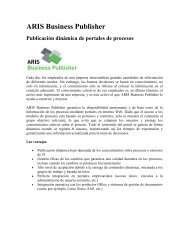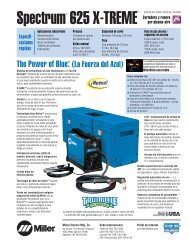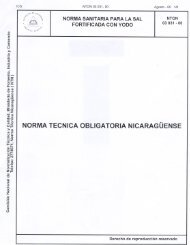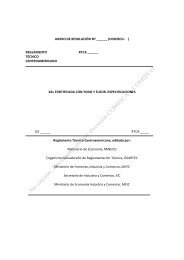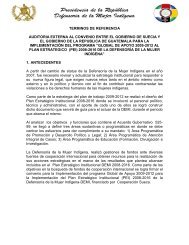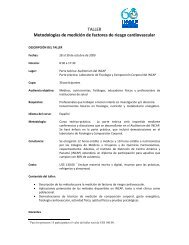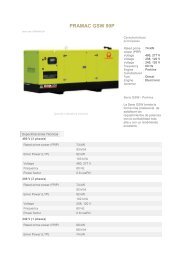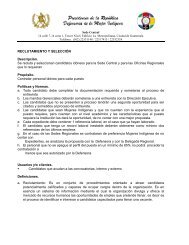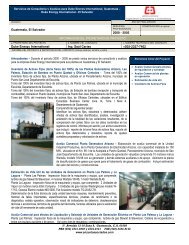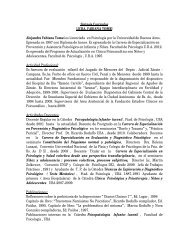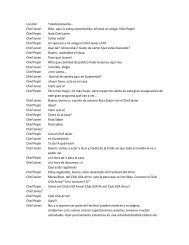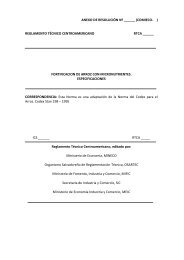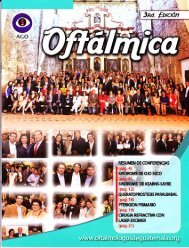Trans-Fat Reduction - central america
Trans-Fat Reduction - central america
Trans-Fat Reduction - central america
Create successful ePaper yourself
Turn your PDF publications into a flip-book with our unique Google optimized e-Paper software.
From June to October 2009, the researchers designed a standarized<br />
questionnaire which was sent to 12 companies who have adhere to the PAHO<br />
and WHO`s initiative, the main issues were:<br />
• Percentage and type of fats and oils used to replace the trans fats.<br />
• Actual and past content of specific foods.<br />
• Barriers found during the process of trans-fat elimination process.<br />
At the same time, two of the researchers made independent searches on the<br />
web pages of the companies about the declaration on the trans-fat content of<br />
food they make.<br />
Results<br />
The companies answer the questionnaire:<br />
Only 3 out of 12 companies answered the questionnaire completely, 3 of them<br />
returned an abstract but without giving information about specific products, 1<br />
company did not participated since it did not produced “fried or baked”<br />
foods. 5 companies did not answer the questionnaire.<br />
Percentage of trans-fat reduction<br />
They compared the content of fat on fast food, sauces and dressings, sweets<br />
and chocolates, sweet and salad cookies; the initial content which varied<br />
form 28g of trans fat/100 grams of total fat to 0 grams, there was a reduction<br />
between 0 to 100% depending on the product. The average reduction varied<br />
from 1.1 to 5.9 grams per portion to 0.2-0.6 g per portion.<br />
Type of fat and oils used to replace the trans fats<br />
The fats used to replace the trans fats are oil mixtures, which depend on the<br />
regional availability and the specific mixture of each company: McDonald`s<br />
uses in Brazil a mixture of cotton, palm and soybean oils; in South America<br />
they use soyflower with high contents of oleic acid and in Central America and<br />
the Caribbean they use sunflower, canola, soybean and corn oil.<br />
Cargill uses oils with high content of oleic acid in Mexico and Canada and an<br />
oil with high content of linoleic acid in Venezuela.<br />
Besides, PepsiCo, Nestlè and ABIA report the use of fat mixtures of cacao and<br />
palm, corn oil and sunflower with high content of oleic acid. PepsiCo uses<br />
corn oil to replace trans fats in 56% of its products, sunflower oil with medium<br />
content of oleic acid on 25% of their products and a mixture of corn and<br />
soyflower oils low on linoleic acid for 19% of their products. Finally, they use<br />
palm oil to replace 100% of trans fat in sweet and salty cookies.<br />
It is important to point out that the reports of the 2 companies mentioned<br />
that their products are free of trans fat since 2007-2008, but they don`t<br />
specify the specific actions in Latin America and the Caribbean.<br />
Obstacles found during the process of elimination of trans fat<br />
The companies report that the experimented barriers on this process are:<br />
• The identification and availability of a fat succedaneous of fat or oil<br />
that is adequate for their food products.<br />
• Cost of these substitutes


